Samsung Droid Charge Review - Droid Goes LTE
by Brian Klug on June 22, 2011 7:47 AM EST- Posted in
- Smartphones
- Samsung
- LTE
- 4G
- Droid Charge
- Mobile
Cellular and 4G LTE
We’ve now talked about the cellular architecture of the HTC Thunderbolt and LG Revolution, it’s now the Droid Charge’s turn. The Thunderbolt has the privilege of being the sole 4G LTE smartphone capable of doing simultaneous voice and data on both 3G EVDO and 4G LTE. The LG Revolution and Droid Charge can both transact voice and data at the same time only when connected to 4G LTE.
The Charge does this with a very interesting combination of two basebands. 4G LTE connectivity is accomplished with Samsung’s very own CMC220 baseband, which is a category 3 device (same as Qualcomm’s MDM9600, and LG’s L2000) - 50 Mbps / 100 Mbps for upstream and downstream respectively on 20 MHz channels.
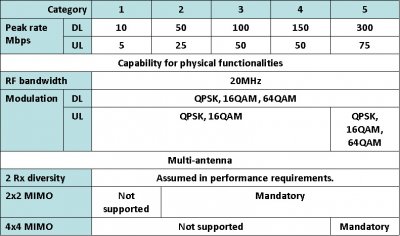
Like all the other devices, the Charge uses Verizon’s 4G LTE network on its 700 MHz spectrum, in LTE Band 13. We’ve talked extensively about Verizon’s 4G LTE network architecture in an exploratory piece already, but for a quick refresher Verizon currently is using 10 MHz channels with FDD, and has a total of 22 MHz of bandwidth. Even in markets where Verizon has licenses for additional spectrum, currently only upper C is being used. This is my first time seeing Samsung’s CMC220 on Verizon.
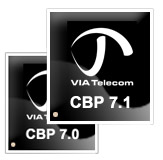
What’s particularly curious about the Charge is that there’s no Qualcomm baseband for CDMA2000. Both 1x and EVDO are handled by VIA Telecom’s CPB7.1 baseband. This is very interesting, as it’s the first time in a long while I’ve seen something other than Qualcomm used for a CDMA2000 baseband inside the United States, though in China Via Telecom is apparently a major player. For comparison, the Samsung Fascinate used Qualcomm’s QSC6085 baseband. This combination of things makes the Charge one interesting and unique device from a cellular perspective.
We don’t have to disassemble anything either, as the FCC has some nice shots of the Charge’s main PCB showing both basebands sitting pretty next to Hummingbird and its PoP LPDDR2. Center bottom is the VIA Telecom 7.1 (you can even make out VIA), and above it is the Samsung CMC220.
Before we get to performance, let’s also go over what the Charge exposes for controlling these two radios. Inside Wireless & Network and Mobile Networks is a system selection toggle. Tap this and you can change from “LTE automatic” to “CDMA mode.” The former lets the Charge hand up to LTE whenever it is available, the latter forces the Charge to only use EVDO and 1x data. If you’re in an LTE market and want to save some power, this is handy. However, there’s no ‘LTE only’ mode that would force the Charge to hang onto LTE a bit longer, although its behavior wouldn’t offer any power savings.
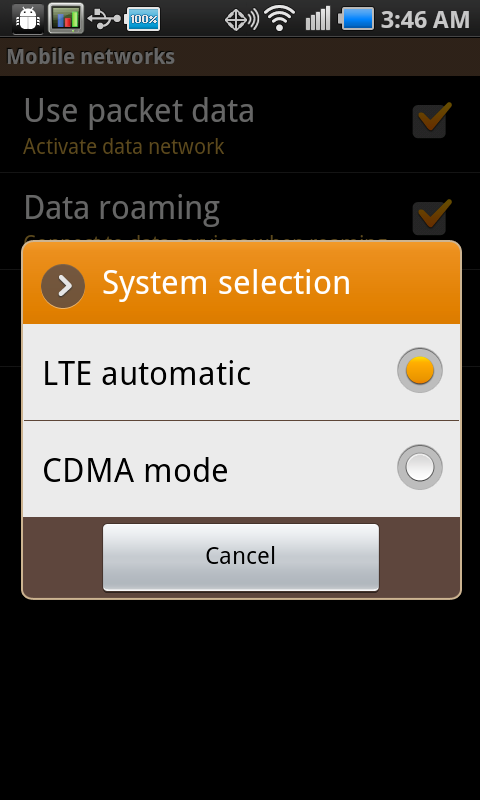
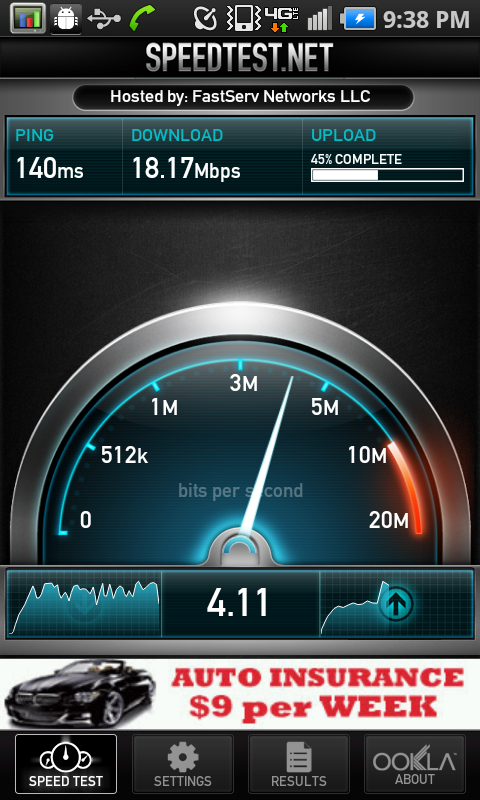
I was very impressed with the way the Charge hands over from EVDO to LTE most of the time, and never found myself want for more low-level control. In this regard, Samsung has done a nice job keeping data sessions working across the two basebands. My only complaint is that every once in a while, the LTE data session sometimes stalls briefly – sometimes for a a few seconds, other times for a few minutes. When that happens, you’ll see the uplink green arrow blink, but no orange downlink arrow. Rebooting the device fixes things.
I seem to have developed the bad habit of taking so long with devices that they see their first firmware update and fixes. Then issues that I’ve identified in the launch software are addressed, and I have to go re-test everything to find what new issues have appeared in their stead. The Charge received its first major update last week, which both fixed the broken WiFi hotspot functionality (which previously stopped working exactly when May ended), and also changed the Charge’s bars to closely mimic those of Android 2.3.
The update purports to improve handover between 3G EVDO and 4G LTE, improve call time battery life, improve call quality, enhance browser performance, and also improve GPS fix times among other things. I honestly couldn’t detect a measurable improvement in handover (the stall issue I mentioned still persists), and as I’ll show later call time battery life is better by a very small margin. I’ll talk more about the other changes in their respective sections.
One subtle difference I noticed is that I can’t update the PRL on the Droid Charge the same way I could on the Thunderbolt. Dialing *228 to do an over the air PRL download yields the following:
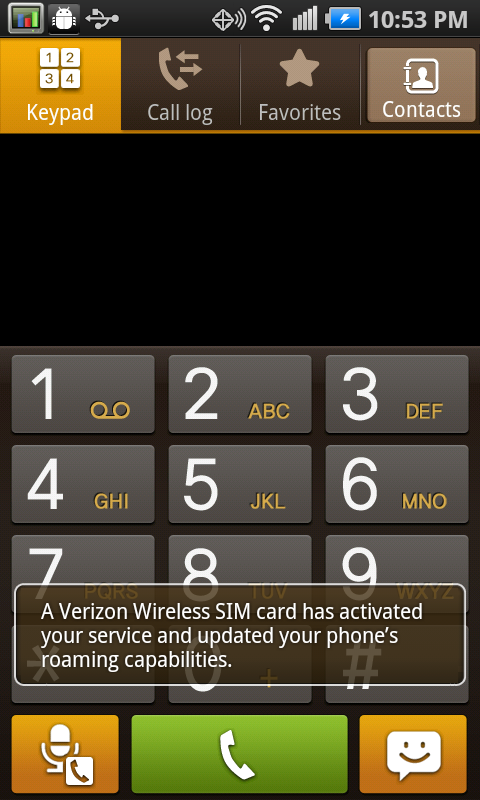
It appears that we now have confirmation that both LTE and CDMA are using the USIM/CSIM in the device for both their roaming capabilities and cellular identities. I asked Vivek to do the same on his LG Revolution evaluation unit and he saw the same behavior. Back with the Thunderbolt, the OTA download would appear to complete happily just like any other CDMA handset. Regardless, in theory, you should now be able to swap SIMs (and thus your number, account, and service) between at least three handsets on Verizon – wow, that’s one sentence I wouldn’t have ever believed I’d write a year ago.


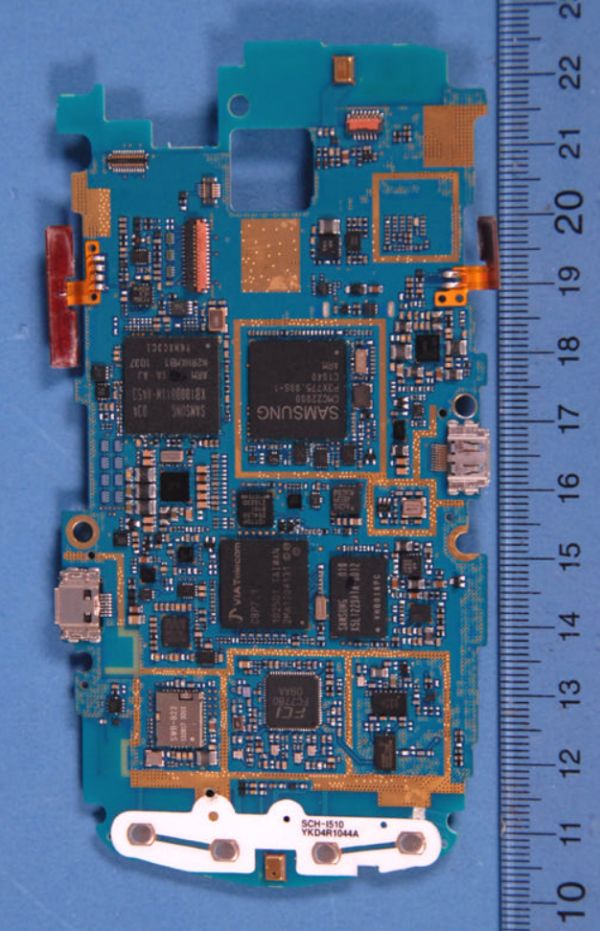








61 Comments
View All Comments
name99 - Wednesday, June 22, 2011 - link
This is a silly statement. The problem is not specifically with CDMA, it is with Verizon, or if you prefer, with IS-95.CDMA as an underlying technology has won, no-one is arguing about this anymore. Every future cellular standard (even the GSM ones) utilizes CDMA as part of the suite of technologies that it uses.
You are correct about this particular problem with the Verizon system (along with various other dumb problems, eg issues in consolidating long SMS messages, or use of unicode in SMS), but are mistaken in what you blame for the problem.
tdenton1138 - Wednesday, June 22, 2011 - link
Got a Charge after having an 1.1Ghz (OC'd) OG Droid on CM 7.0.3 and WOW what an upgrade. Of course, you'd think it would be but its amazing the difference.There are two custom roms out, a few kernels, voodoo lagfix and cwm recovery works, except for nandroid (at the moment).
Weird the review said the T-Bolt gets better battery life... Everyone over at XDA and AC complains about the T-Bolt battery and those that have switched to a Charge have seen a marked improvement in battery life. Don't know what to make of that, but I get 17+ hours of normal use, so I don't complain.
We've now got 3 Charges in the family and we all love them. Would I have rather waited for the SGS2? Not after using the Charge. It was more than enough of an upgrade for me right now. Dual core will be helpful sometime (Honeycomb? Ice Cream?), but I can do everything I need with zero lag (and I mean zero), so its no big deal for me today.
GrizzledYoungMan - Wednesday, June 22, 2011 - link
Any advice on custom ROMs for the Droid Charge? The Google seems to come up with disparate results, and few reviews. I'd love to hear your thoughts!Omega215D - Wednesday, June 22, 2011 - link
I get around that many hours of usage from my STOCK Thunderbolt. I just don't push e-mail or Facebook notifications as that will kill any phone (like my Storm 2). I find that my Thunderbolt gives me similar battery life that I was seeing under my Droid 1 but on LTE with the Thunderbolt.tdenton1138 - Thursday, June 23, 2011 - link
@ GrizzledYoungMan: I'm currently running Altered Beast v5 (its a themed rom) with gummyCHARGED 1.7.5 kernel, voodoo lagfix enabled. There's also a gummyROM that's more AOSP than Altered Beast. To each their own.@Omega215D: Not having a T-Bolt, I can only relay the comments I see on the Charge boards at XDA and AC. If you get great battery life, then great! FWIW, I also got great battery life "STOCK", but wanted to de-bloat and get rid of most of the poop brown that Samsung seems to like.
dudefrommars - Wednesday, June 22, 2011 - link
The physical buttons are great. I wish my other phones had those.I had this phone for 3 days and returned it.
The voice quality had more pops and cutoffs than my nexus one on t-mobile.
Small difference in voice quality, but I found it really annoying.
The touchwiz ui is awful.
The browser lacks the +- on screen buttons that zoom in and re-format web pages to screen width. With touchwiz, you can zoom in, but end up scrolling left and right - I HATE that.
The disabled tethering was the final straw.
I only use mobile data with my laptop a few times per year, so paying fees for all those months with no usage is not acceptable.
On the plus side, verizon was very good about the return.
$35 restock, and they pro-rated the usage to the days I had the phone.
Omega215D - Wednesday, June 22, 2011 - link
I felt the same way when I contemplated about returning my Thunderbolt for the Droid Charge. The screen on the Charge is great and the battery life seemed to be better (looking at the battery meter on an unplugged Charge and its usage) and for some reason didn't feel as slippery as many reviewers noted.Playing with the phone for an hour or so and it was a bit of a pain. The lag and lack of web reformatting got to me. Plus there isn't any LED notification light.
With 2.3 supposedly on the way I have no real reason not to like my Thunderbolt but Sense UI is great to use without being on 2.3.
sitharien - Wednesday, June 22, 2011 - link
You seem to be way more thorough in your phone reviews. Please review the EVO 3D, for Sprint. The last guy just seemed to speed past everything. With Android devices, battery tests really matter, but the guy that reviewed the EVO 3D barely spent a paragraph on it. He seemed biased against the either the phone or the carrier from the outset. Maybe the 3D moniker ruffled his feathers....Impulses - Wednesday, June 22, 2011 - link
What are you talking about, Anandtech hasn't reviewed the EVO 3D yet, they ran a hands-on performance preview but that was it. I think they're gonna be doing the Sensation and Droid X2 first, but I hope they tackle the EVO 3D after that...Other reviews on the web are so contradictory it's not even funny, and no one seems to be able to run a proper battery test. Honestly, all the news blogs reviews are mediocre at best, it's pretty dad when a CNet review actually gives more detail than almost anything else (Laptopmag's was pretty thorough too, still nowhere near AT standards tho).
I'm actually holding off on upgrading while waiting for the AT EVO 3D review, even tho my EVO 4G has been suffering from sporadic reboots lately (they seen to be heat related). If the Photon wasn't on the horizon I might've taken the plunge knowing I have 30 days tho.
Brian Klug - Wednesday, June 22, 2011 - link
I think you're alluding to our hands-on piece with the EVO 3D from a meeting with HTC at Qualcomm Uplinq. We're absolutely going to review the EVO 3D, actually that's scheduled now. Anand is going to do that review however since there is no WiMAX in my state sadly. I've got the HTC Sensation, however.-Brian